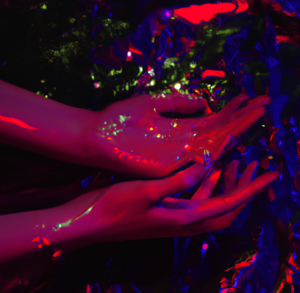The sense of touch is often overlooked in the art of writing and illustration, but it can be a powerful tool for creating vivid and engaging works. Haptic sense refers to the sense of touch and the perception of texture, weight, and other physical sensations. By incorporating haptic sense into their works, writers and illustrators can create a deeper and more immersive experience for their audience.
 In writing, haptic sense can be used to create a sense of place or to convey the physical experience of a character. For example, describing the texture of a rough stone wall or the weight of a heavy object can help to bring a scene to life. By using descriptive language that engages the reader’s sense of touch, writers can create a more vivid and memorable experience for their readers.
In writing, haptic sense can be used to create a sense of place or to convey the physical experience of a character. For example, describing the texture of a rough stone wall or the weight of a heavy object can help to bring a scene to life. By using descriptive language that engages the reader’s sense of touch, writers can create a more vivid and memorable experience for their readers.
In illustration, haptic sense can be used to create depth and texture. By incorporating textures and patterns that can be felt with the eyes, illustrators can create a more immersive experience for the viewer. This can be done through the use of shading, cross-hatching, or other techniques that create a sense of depth and dimensionality.
One example of a work that uses haptic sense effectively is „The Artful Pen: How to Paint Pictures with Words and Illustrations”. This book teaches writers and illustrators how to create more vivid and engaging works by using haptic sense. By exploring the use of descriptive language and visual techniques that engage the sense of touch, this book provides a wealth of insights and strategies for artists of all kinds.
Overall, the use of haptic sense in writing and illustration can be a powerful tool for creating more engaging and immersive works. By engaging the reader or viewer’s sense of touch, artists can create a more visceral and memorable experience that lingers long after the work is finished. So whether you’re a writer, illustrator, or artist of any kind, consider incorporating haptic sense into your works and see the impact it can have on your audience.